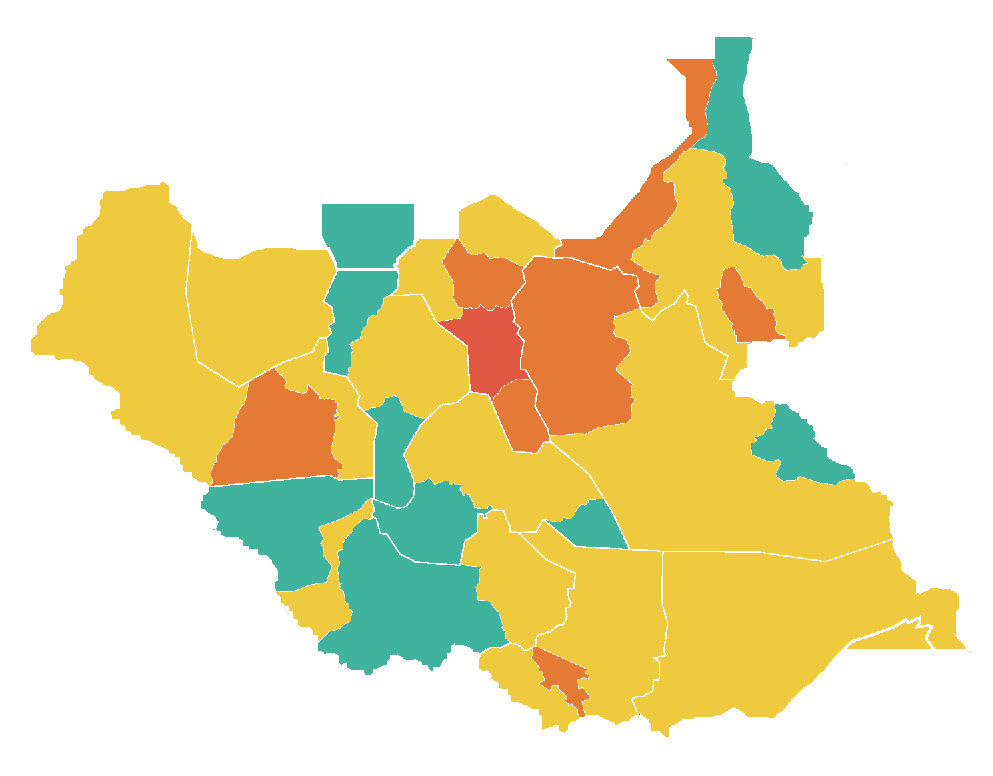Food Insecurity in
South Sudan

South Sudan is no longer experiencing famine. But has food security in the East African nation improved?
For four months in 2017, South Sudan became the first country since 2012 to experience famine. Severe food shortages led to the declaration of famine in the war-torn nation’s Unity State. Now, the entire population has fallen below the famine threshold, but the situation remains dire. More than half the country’s 12 million people face critical food shortages, and 1.73 million people remain at risk of acute malnutrition, starvation and death.
May 2017
June/July 2017
20,000 people experienced famine
1.5 million people experienced food emergency
4.02 million people experienced food crisis
4.03 million people experienced food stress
2.32 million people experienced minimal food insecurity
45,000 people experiencing humanitarian catastrophe
1.69 million people experiencing food emergency
4.35 million people experiencing food crisis
3.62 million people experiencing food stress
2.19 million people experiencing minimal food insecurity
May 2017
June/July 2017
20,000 people experienced famine
1.495 million people experienced food emergency
45,000 people experiencing humanitarian catastrophe
1.685 million people experiencing food emergency